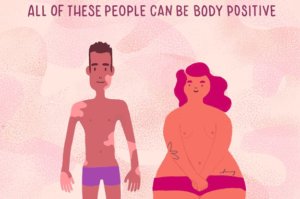
Have you ever started to dream and suddenly realize that you are dreaming? Or have you managed to take control of your dream story? If your answer is “yes” to any of these questions, you may have experienced what is called lucid dreaming . This dream experience is called lucid dreaming, and it happens when you are aware that you are dreaming.
You can recognize your thoughts and feelings while the dream is happening and sometimes you can control the lucid dreaming. You can change the people, the environment or the story. Doesn’t that sound like a terrifying yet beautiful experience? We searched for the answer and the details of the question of what is a lucid dream, namely Lucid dreaming. Good reading!
What is lucid dreaming?
Many people experience what is called lucid dreaming, and some even control certain elements of night dreams. In general, we may not know, of course, whether the dream we see is real or not. According to some studies, about half of all people have lucid dreams at some point in their lives, and about 11% have one or two lucid dreams a month.
Experts explain, “Lucid dreaming is defined as a dream in which people realize that they are dreaming while they are dreaming and realize that they are in a dream at that moment.” It’s unclear how many people actually have lucid dreaming, although some studies have attempted to gather information on its prevalence – and the phenomenon appears to be quite common.
Edgar Allan Poe wrote in his much-quoted poem A Dream Within A Dream, “Everything we see or seem is a dream within a dream”. Whether he’s right is perhaps a question for philosophers to debate, but the boundary between dreams and reality is something lucid dreams seek to explore.
We can also say that movies like Inception popularized lucid dreaming. As viewers know, the film featured impressive dream crafters who were able to control the shape and content of their dreams as well as the dreams of others. As one character in the movie quite aptly puts it, “Well, dreams seem real when we’re in them, right? But when we wake up, we realize that something is really strange.” However, some people may enter a dream and become fully aware of the fact that they are actually dreaming.
How Does Lucid Dreaming Happen?
When you sleep, your brain switches between rapid eye movement ( REM ) sleep and non-REM sleep. Non-REM sleep includes three distinct stages. During the non-REM period, your brain waves, heartbeat, and eye movements gradually slow down. In REM sleep, the brain is extremely active. Lucid dreaming, like general dreams, usually takes place during REM sleep. In a lucid dream, you know you are dreaming. During the dream state, you are aware of your awareness.
We can say that about 55 percent of people have lucid dreams at least once or more in their lifetime. However, frequent lucid dreaming is rare. Only 23% of people have lucid dreams at least once a month.
How Are Lucid Dreams Experienced?

There are many techniques used by people who want to try lucid dreaming or perfect their lucid dreaming experience. Lucid dreaming is certainly a fascinating and fascinating possibility; Being able to explore our inner worlds with the full awareness that we are in a dream has an intriguing and almost magical taste.
You can try the following tips to discover lucid dreaming.
Get More REM Sleep
Since lucid dreaming generally occurs during REM sleep, spending more time in this phase will increase your chances of lucid dreaming. The more adequate and quality sleep you can get, the more you can extend your REM sleep. When you have healthy sleep habits, your body can transition smoothly through all four stages of sleep.
To practice good sleep hygiene:
• Follow a sleep schedule.
• Do not delay your daily exercises.
• Get away from electronic devices before going to bed.
• Create a relaxing sleep environment.
• Avoid caffeine and alcohol before going to bed.
Even if you’re not lucid dreaming, these habits will help you get restorative sleep.
Keep a Dream Journal
Many people use a dream journal or dreambook to remember and control lucid dreams, or to help them have clearer dreams. Writing down your dreams forces you to remember them. This is thought to help your brain become more conscious about dreaming. You can keep a notebook and pen ready right next to or near your bed to get into the habit of keeping a dream journal regularly and to remember to write down your dream when you wake up. Write down your dream as soon as you wake up, and regularly read the dreams you write in your diary so that you can connect your dreams with your dreams.
Take a Reality Test
Your level of consciousness is similar when you are awake and when you are dreaming. Thus, by increasing your awareness while you are awake, you can increase your awareness while you are dreaming. Reality testing is a popular way to do this. It trains your mind to recognize your own awareness while awake. The method involves doing reality checks throughout the day. As reality testing becomes a habit, you will be able to create awareness while dreaming.
Popular reality checks include:
• Push your fingers towards your opposite palm. If they pass, you are dreaming.
• Pay attention to the mirrors. In the case of a dream, your reflection will not look normal.
• Use the nose hold method. When you pinch your nose, you will be able to breathe if you are in a dream.
• Try to read. Look away from the text you see and then look back again. If you are dreaming, the text will change.
• Take a look at your tattoos. If you have tattoos, look at them. They will look different in a dream.
You can choose one of the options that you think is the most memorable and repeat it several times a day. You can also experience other different reality checks to determine which reality check is more suitable for you.
Try Induction Techniques
While lucid dreaming generally occurs randomly, lucid dreaming is possible with inductive techniques. Some methods to achieve this can be listed as follows:
• Go back to bed (WBTB). Wake up five hours after going to bed. When you fall back asleep, you will be more likely to enter REM sleep while still conscious.
• Mnemonic induction of lucid dreams (MILD). Tell yourself you’ll be lucid dreaming tonight. You can do it while awake at bedtime or during WBTB.
• Wake-initiated lucid dreaming (WILD). In WILD, you enter REM sleep from wakefulness while maintaining consciousness. It refers to hypnagogic hallucinations , that is, lying down until you have vivid dreams.
It is helpful to use these techniques in conjunction with reality testing and a dream diary to increase your chances of lucid dreaming.
A Few Possible Benefits of Lucid Dreaming

Lucid dreams are said to have some benefits. For example, it is said to have the potential to help people with fears of flying or heights or spiders overcome these fears. At the same time, lucid dreaming is attractive as an unconventional entertainment tool, as is the immersive experience of virtual reality.
Reduces Nightmares
While occasional nightmares are normal, recurring nightmares can be exhausting. They can interfere with consistent quality sleep. Frequent nightmares usually affect people with problems such as:
• Stress
• Anxiety
• depression
• Lack of sleep
• Sleep disorders such as narcolepsy
• Post-traumatic stress disorder (PTSD)
• Medication
• Substance abuse
Lucid dreaming can provide relief by reducing recurring nightmares. During a lucid dream, you can realize that the nightmare is not real. However, during your nightmare, it allows you to be in control so that you can get away from fear and make it independent from you or transform it into a more beautiful one.
Helps Relieve Anxiety
By reducing nightmares, lucid dreams can alleviate nightmare-related anxiety. It is also used to relieve anxiety caused by PTSD (post-traumatic stress disorder). There is also said to be anecdotal evidence of lucid dreaming that helps with general anxiety, but more scientific research is of course needed to confirm this with certainty. However, some people say it allows them to deal with the source of their anxiety.
Increases Motor Skills
Visualizing physical movements can increase the true ability to do them. When you practice motor skills while dreaming, your brain’s sensorimotor cortex is activated. This is the part of the brain that controls movement. Luminous dreaming can aid physical rehabilitation for people with a physical disability. It can also benefit people without physical disabilities by improving sports performance and other motor skills.
Enhances Creativity
Lucid dreaming can potentially increase your creativity. Typically, people who are more creative are more likely to lucid dream. This is thought to be due to the ability to visualize events and the increased number of recalling dreams. But according to anecdotal reports, the opposite is also true. People claim that lucid dreaming boosts their creativity and imagination. While this has not been proven by science, many people have been known to use lucid dreaming to sharpen their creativity. Maybe it’s worth a try!
How Can Lucid Dreaming Be Interpreted?

It is possible to interpret a lucid dream, just as you would in a normal dream. Dream interpretation can help you understand the relevance of your dreams. In fact, it is said that the lucid dream is much easier to interpret when it appears. Your awareness increases your ability to observe the dream as it is. Lucid dreams are also more vivid, which helps you remember events and details. Keep a dream diary to interpret your lucid dreams. Writing down your dreams will help you discover important themes. It is also recommended to keep a regular diary. By recording your dreams and daily life, you will be more likely to find connections. When you read your dreams from your dream book that you keep regularly, it will be more concrete and easier to interpret or associate them with events.
What are the risks of lucid dreaming?
Lucid dreaming is generally considered safe, but it’s worth mentioning that there are some risks for people with mental health disorders. If we list some of the risks that may occur, as follows;
• Sleep problems: It can be difficult to get enough sleep as lucid dreaming techniques deliberately interrupt sleep. The risk is higher if you have a sleep disorder.
• Depression and anxiety: Sleep problems can intensify depressive symptoms and anxiety.
• Derealization: lucid dream induction links reality with dream, making it difficult to determine what is real.
• Dissociation: The overlap of reality and dream can also cause disconnection from your environment or yourself.
During lucid dreaming, you become aware of the moment your dream comes true. In some cases, you can control the story of the dream.
If you have a sleep or mental disorder, be careful. Trying to lucid dream poses several risks, including sleep interruptions and derealization. It’s always best to talk to a therapist or sleep specialist before trying lucid dreaming.
Lucid dreaming can be a fascinating, useful, or pleasant experience, but before you try, you should consider why you are interested in achieving it and what you hope to get out of it.
What is the June Zodiac Sign? What are the Characteristics of the June Zodiac Sign?
What are the Benefits of Reading Books? Do Books Improve Our Memory?













